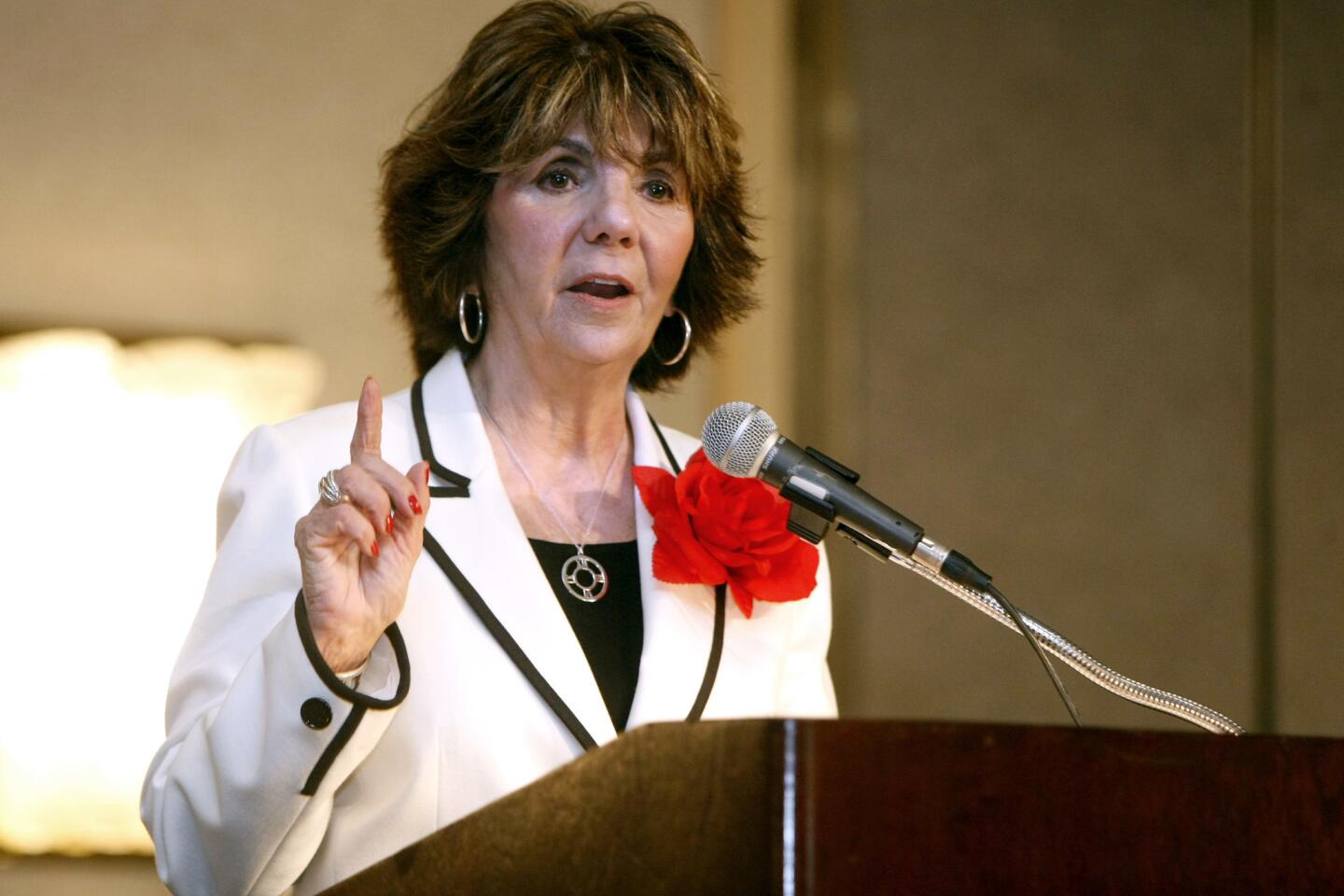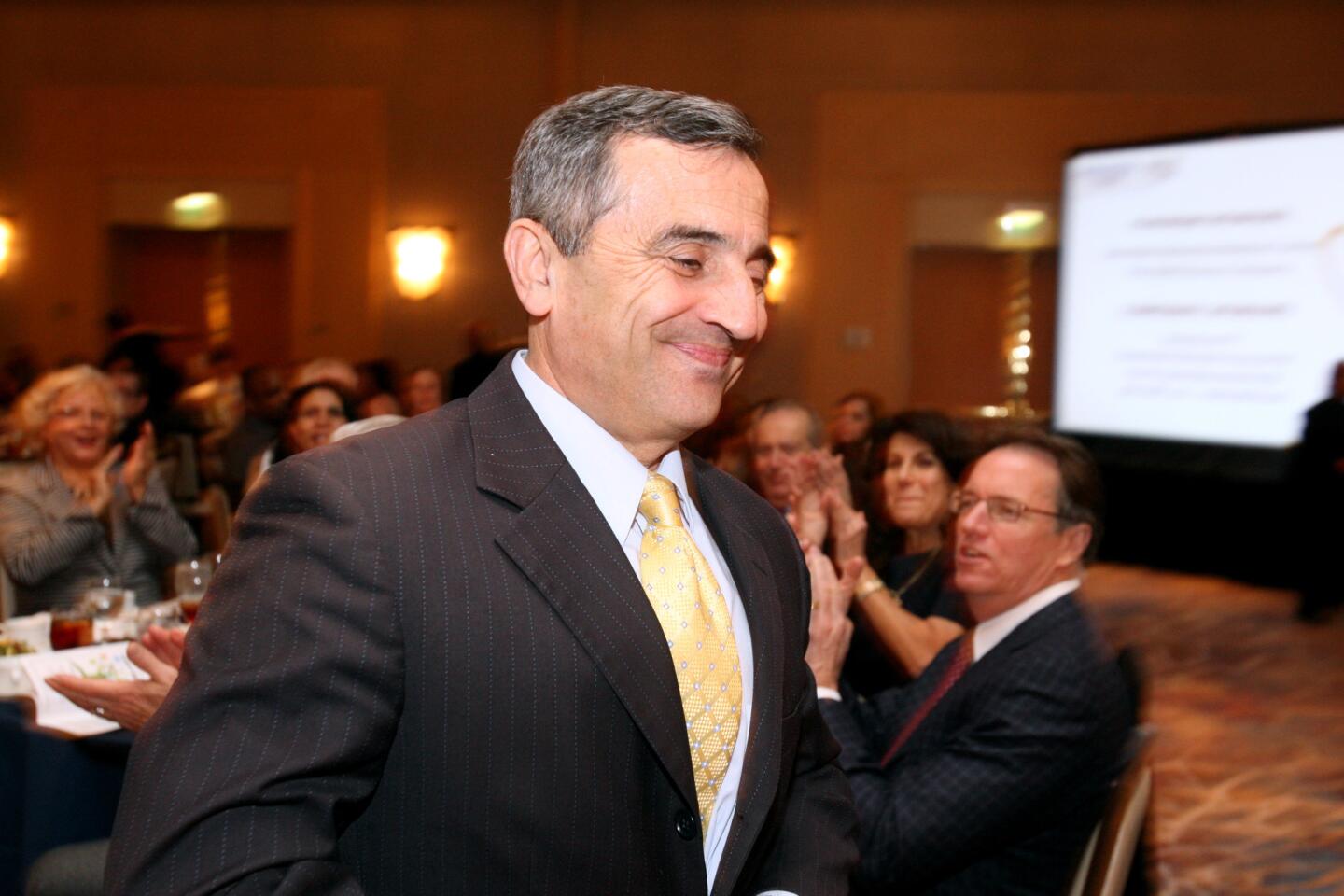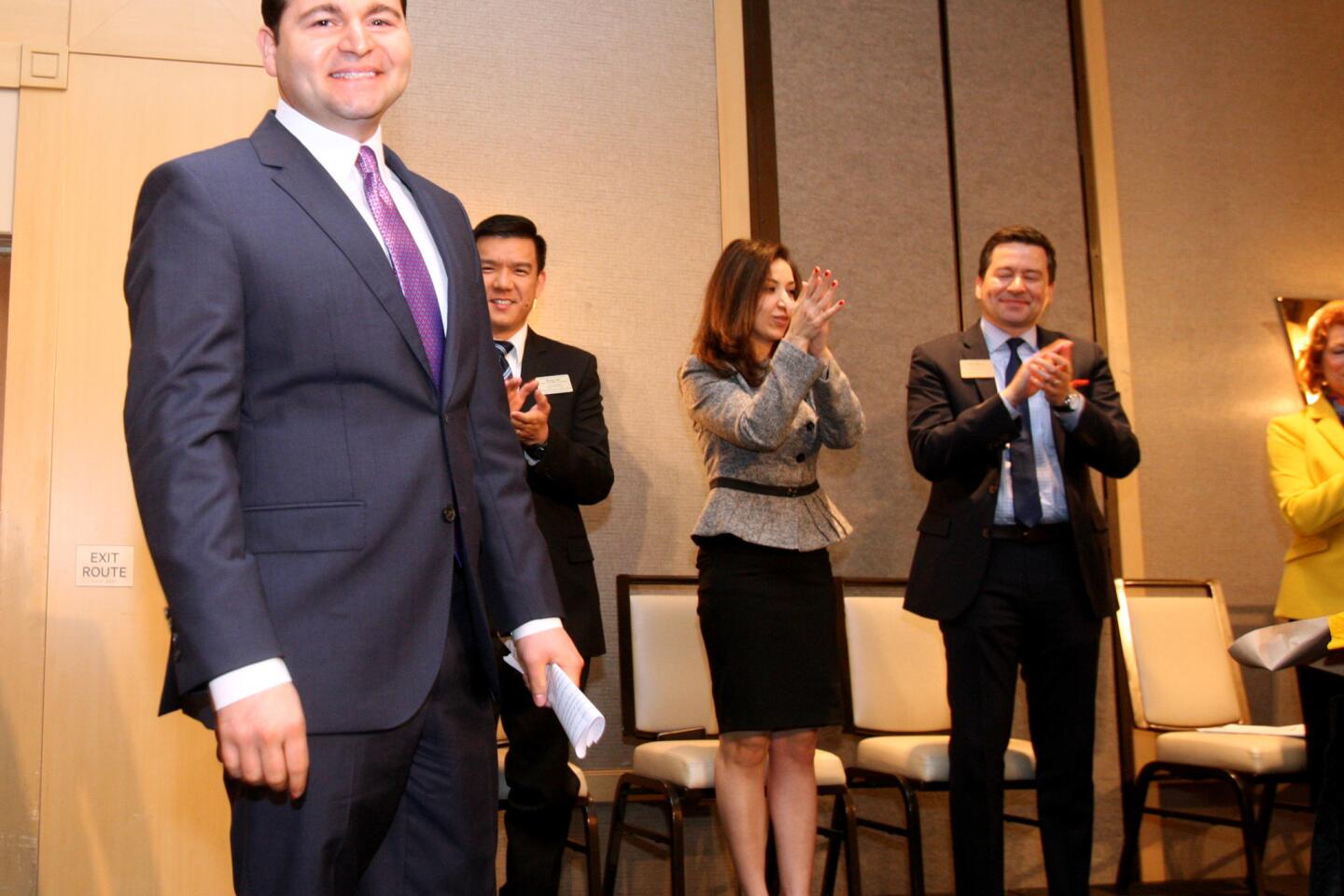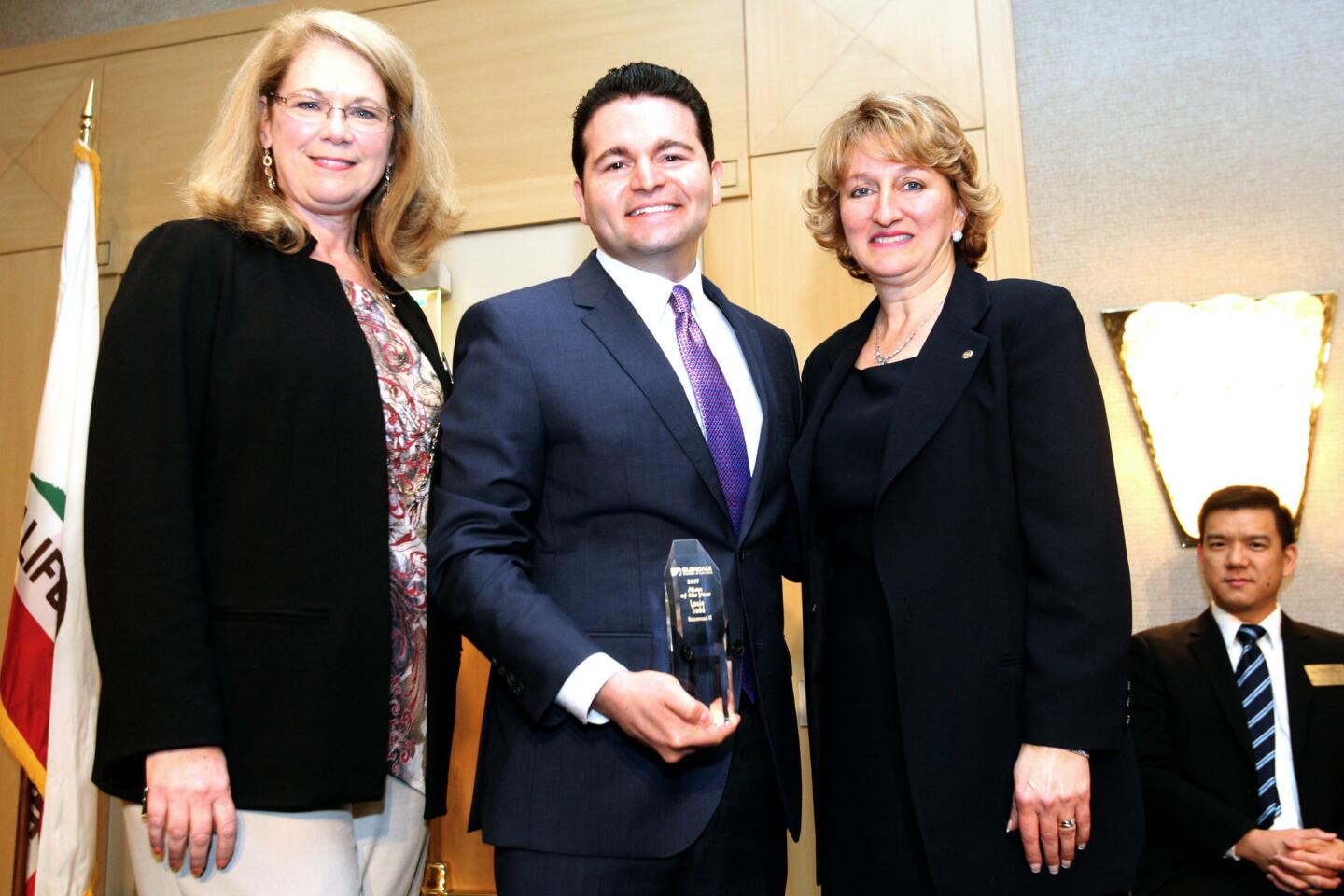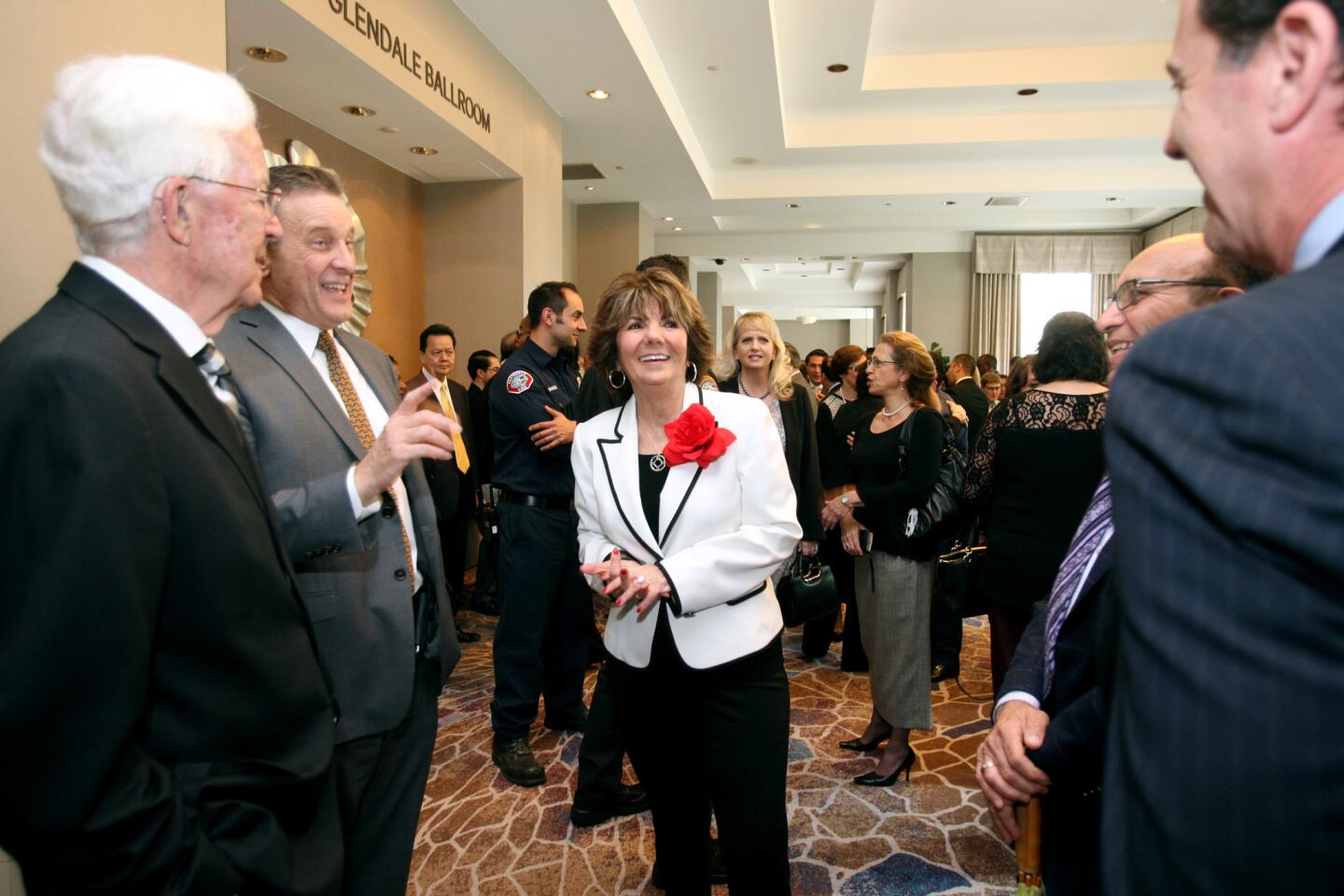State of the City address highlights Glendale’s safety, budget and development
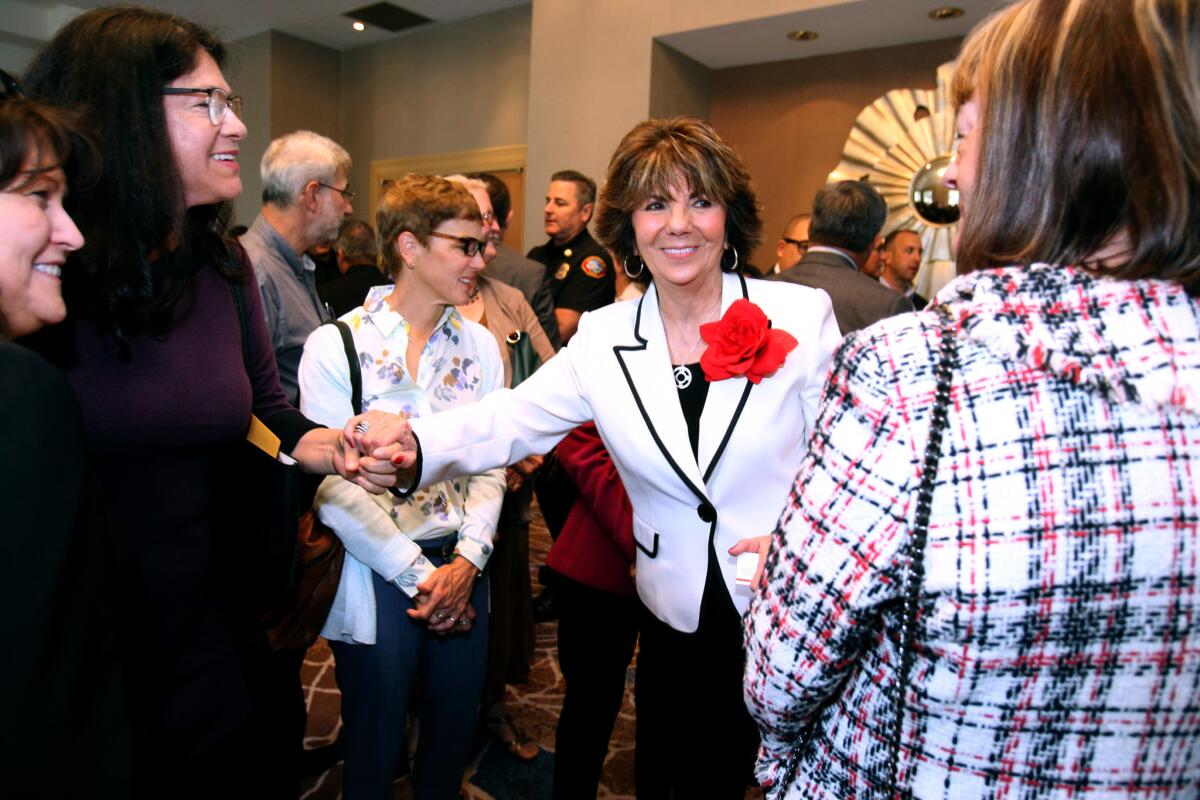
Nearing the close of her first term as Glendale’s Mayor, Paula Devine lauded the safety of the city and its balanced budget for fiscal year 2016 at the annual State of the City address Wednesday, but she warned of the potential for a multimillion-dollar loss in the General Fund.
Glendale continued to rank among the safest places to live last year, earning the third spot in California and sixth nationwide for cities with a population of 200,000 or more, according to statistics from the FBI Uniform Crime Report. The ranking comes despite Glendale’s poor reputation when it comes to pedestrian-related accidents, which saw a 45% dip in incidents last year.
Devine praised the city’s roughly $80-million General Fund reserve — about 41% of the adopted General Fund budget — attained without the need for cuts to “core” city programs and services.
Join the conversation on Facebook »
“Your city government continues to be lean and more efficient than ever before, doing much more with less while delivering high-quality services,” Devine said. “We have reinvented ourselves.”
The increase in downtown development — particularly mixed-use, high-rise apartments — is the continued subject of criticism from many people in the community who believe it’s had a negative impact on traffic and density.
Devine, however, said the new developments are “performing as designed,” reporting that most of the buildings are at “upward of about 94%” occupancy and the tenants are valued contributors to the city’s economy and “vibrancy.”
Last year was also the start of Glendale’s Tech Initiative plan, where city officials extended a hand to technology companies as a way to encourage growth. Also, a housing development project called ACE 121, which provides units to artists and their families, was completed.
Devine said this year will see the conclusion of several long-term projects, including the renovation of the Glendale Central Library, and issues, such as whether or not the city should upgrade the aging Grayson Power Plant.
More uncertain, however, is whether or not the city will repay $57 million to residents for illegal energy-rate increases as well as cease the annual transfer of $20 million from Glendale Water & Power’s electric revenue fund to the city’s General Fund.
Last year, an L.A. Superior Court judge found the city violated its charter when it transferred $85 million from the utility to its General Fund during the previous five years.
The issue now hinges on the City Council’s decision about whether to appeal the court’s ruling.
“We are currently evaluating the risks and benefits of appealing this challenge and determining the best course of action for the city and its residents,” Devine said.
Several local residents and businesses were honored at the luncheon, hosted by the Glendale Chamber of Commerce, for their contributions to Glendale.
Glendale Chamber of Commerce 2017 Honorees
Woman of the Year: Natalie Profant Komuro, Ascencia
Man of the Year: Louie Sadd, Datastream IT
Project of the Year: Arts Colony Project, YMCA of Glendale
Organization of the Year: YMCA of Glendale, Chief Executive George Saikali
New Business of the Year: Premier Print & Services Group, Brent LaBine, Vince Wrzos, Mark Fagerberg
Business of the Year: Dignity Health Glendale Memorial Hospital, President Jack Ivie
Twitter: @JeffLanda

